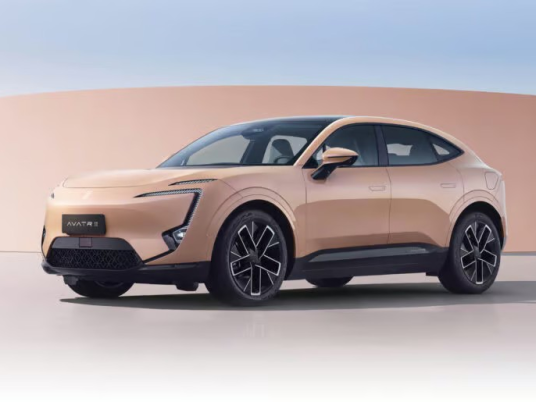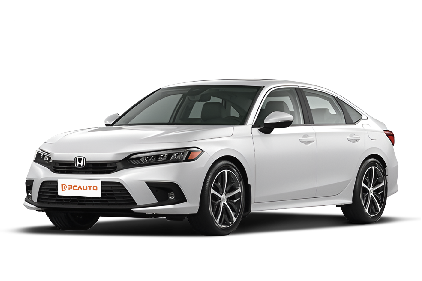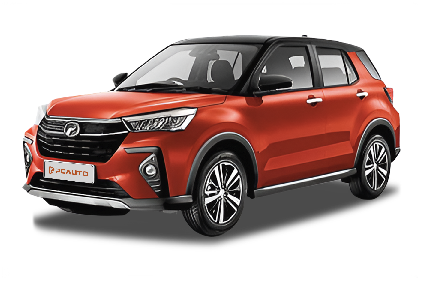Q
How does the Xiaomi SU7 compare to Tesla?
Xiaomi SU7 and Tesla differ in several aspects.
1. As a new entrant in the automotive field, Xiaomi SU7 may have its own characteristics in terms of smart features and cost performance.
2. On the other hand, Tesla, as a pioneer in the electric vehicle sector, boast mature technology and significant brand influence, with advantages in autonomous driving technology and battery range.
However, specific comparisons should also take into account the detailed configurations of the vehicles, pricing, and the personal needs of the user. For instance, if you place greater emphasis on brand and technological accumulation, Tesla might be more suitable; if you seek high cost performance and emerging technology experiences, Xiaomi SU7 may be worth considering.
Special Disclaimer: This content is published by users and does not represent the views or position of PCauto.
Popular Models
Related Q&A
Q
What are the interior features of the Xiaomi SU7?
The interior of the Xiaomi SU7 typically features high-quality materials, such as soft leather seats, offering a comfortable seating experience. The dashboard may adopt a digital design, clearly displaying vehicle information. The center console is equipped with a large touchscreen, integrating various smart functions such as navigation, multimedia entertainment, and vehicle control settings. The cabin provides ample storage space, making it convenient for passengers to place their belongings. Some versions may also come with an advanced audio system, creating a premium sound environment.
Q
What is the top speed of the Xiaomi SU7?
The Xiaomi SU7 has different top speeds depending on the version. The Rear-Wheel Drive Standard Long Range Intelligent Driving Edition and the Rear-Wheel Drive Pro Ultra Long Range High-End Intelligent Driving Edition both have a top speed of 210 km/h. The Four-Wheel Drive Max Ultra Long Range High-End Intelligent Driving Edition has a top speed of 265 km/h, with a real-world measured speed of 271 km/h and a GPS-recorded speed of 269 km/h. The track-focused version, the Xiaomi SU7 Ultra, is even more powerful, reaching a top speed of 350 km/h.
Q
Where can I test drive the Xiaomi SU7 in Malaysia?
Xiaomi SU7 has not been launched in Malaysia yet, so now its test drive service is no available in Malaysia.
Q
Does the Xiaomi SU7 qualify for EV incentives in Malaysia?
Xiaomi SU7 has not yet been launched in Malaysia, so it is uncertain whether it has electric vehicle incentive policies or not.
Q
What are the key features of the Xiaomi SU7?
The key features of Xiaomi SU7 include:
1. A stylish and technologically advanced exterior design with smooth lines and a dynamic shape.
2. Its interior is well-equipped, featuring a high-end infotainment system and comfortable seats.
3. In terms of power, it typically offers robust and efficient power output.
4. Regarding safety performance, it is equipped with a range of advanced active and passive safety features to ensure the safety of the driver and passengers.
However, specific configurations and performance may vary depending on different versions and market demands.
Q
How long does it take to charge the Xiaomi SU7?
The charging time for Xiaomi SU7 generally depends on various factors, including the charging equipment used and the state of the battery. Typically, if using a fast charging station, it may take around 30 minutes to charge up to 80%. If using a standard home charging station, it typically takes about 6 to 8 hours to fully charge. However, it is important to note that the exact charging time may vary.
Q
What is the battery range of the Xiaomi SU7?
Xiaomi SU7 comes in multiple versions, each with different ranges. The rear-wheel drive long-range intelligent driving version is equipped with a 73.6 kWh blade battery, offering a CLTC range of 700 kilometers. The Pro rear-wheel drive ultra-long-range advanced intelligent driving version features a 94.3 kWh Shenxing battery, providing a CLTC range of 830 kilometers. The Max high-performance all-wheel drive ultra-long-range advanced intelligent driving version is equipped with a 101 kWh Kirin battery, offering a CLTC range of 800 kilometers. The Xiaomi SU7 Ultra mass-produced version comes with a 93.7 kWh battery, providing four range options: 520 km, 555 km, 600 km, and 630 km.
Q
Is the Xiaomi SU7 available in Malaysia?
As of now, Xiaomi SU7 has not yet officially launched in Malaysia. However, the automotive market is changing and developing, and whether it will be launched in Malaysia in the future still needs to pay attention to the official news and market trends of Xiaomi Cars.
Q
when will xiaomi su7 launch in malaysia
There is currently no exact information regarding the release date of Xiaomi SU7 in Malaysia. The launch schedule for new Xiaomi products typically considers various factors, including market demand, local policies, and the global marketing strategy of the product. Please stay tuned to official updates from Xiaomi for accurate information.
Q
how much is xiaomi su7
Xiaomi SU7 has not yet been launched in Malaysia, but when converted to Malaysian Ringgit, its standard version is approximately 138,200 MYR, the Pro version is about 157,400 MYR, and the Max version is approximately 192,900 MYR.
Latest Q&A
Q
What is the Gearbox Type of Perodua Nexis?
As an upcoming all-new SUV model, the official details about the transmission type of the Perodua Nexis haven't been released yet. However, based on Perodua's consistent technical approach and market positioning, it's expected to be equipped with a proven D-CVT continuously variable transmission or a 4-speed automatic transmission. These two types of transmissions have been widely used in Perodua's existing models like the Aruz and Bezza. They are particularly suitable for the urban road conditions in Malaysia, balancing fuel economy and a smooth driving experience.
It's worth noting that the D-CVT transmission offers a more direct power response by simulating gear shifts, while the traditional automatic transmission is known for its durability and low maintenance costs. Consumers can choose according to their own driving habits. If the Nexis is positioned as a youthful SUV, more advanced transmission technologies may be introduced to enhance its competitiveness. It is recommended to follow Perodua's official press conference for the final configuration information.
Malaysian consumers can refer to the actual test - drive experience when making a purchase. The transmission tuning has a significant impact on the daily driving comfort. Meanwhile, the transmissions of all Perodua models have been locally adapted to suit the tropical climate and diverse road conditions.
Q
What Engine is used in Perodua Nexis?
The Perodua Nexis is expected to be equipped with a 1.5-liter Dual VVT-i naturally aspirated engine. This engine shares the technical platform with models like the Perodua Ativa and Toyota Rush. It has a maximum output power of about 106 horsepower and a peak torque of 138 Nm. It is paired with a D-CVT transmission, focusing on fuel economy and smoothness in daily driving. The engine adopts a dual variable valve timing system, which can optimize the intake and exhaust efficiency at both low and high speeds and meets the EURO 4 emission standards in the Malaysian market. For Malaysian users who value practicality, this kind of small-displacement engine can balance the fuel consumption during city commuting and the occasional long-distance needs, and the maintenance cost is relatively low. It's worth mentioning that Perodua has gradually upgraded its power technology in recent years. For example, a more efficient 1.0-liter turbocharged option has been applied to models like the Bezza. In the future, it may also offer a hybrid version for the Nexis to adapt to the market trend, but the specific details shall be subject to the official release. The engine design of this kind of compact SUV usually gives priority to durability in tropical climates. It is recommended that car owners conduct regular maintenance to ensure long-term performance.
Q
How much engine displacement of Perodua Nexis?
The Perodua Nexis has not been officially launched yet, so the official has not announced its specific engine displacement (CC) data. However, according to industry speculation, this upcoming B-segment SUV might be equipped with the same 1.0-liter three-cylinder turbocharged engine as the Perodua Ativa. The engine has a displacement of 998cc, a maximum power of 98 horsepower, and a peak torque of 140 N·m, and is paired with a D-CVT gearbox. If the final configuration turns out to be true, this small-displacement turbocharged engine can balance fuel economy and power performance, making it very suitable for the urban road conditions in Malaysia. Meanwhile, Perodua models generally adopt a lightweight design, which further optimizes fuel consumption. It is recommended that consumers keep an eye on the latest news from the official Perodua website or authorized dealers to get accurate information. When making a purchase, Malaysian car owners can also make a horizontal comparison with engines of similar models, such as the 1.5TGDI engine (1477cc) of the Proton X50 or the 1.5L naturally aspirated engine (1498cc) of the Honda HR-V. However, they need to pay attention to the differences in road tax, insurance, and maintenance costs among engines with different displacements.
Q
Which Segment Does Perodua Nexis Belong to?
The Perodua Nexis falls into the B-Segment SUV category. This vehicle is positioned slightly higher than the Axia and Bezza in Perodua's product line. It mainly targets young family users who pursue space practicality and stylish design. The body size of the Perodua Nexis is expected to be similar to that of the Proton X50, but its price will be more affordable, continuing Perodua's characteristic of high cost - effectiveness.
B - Segment SUVs are very popular in the Malaysian market. Vehicles in this category usually have a relatively high ground clearance and flexible cabin space, which are suitable for the diverse local driving environments, including urban commuting and occasional countryside trips.
The Perodua Nexis is expected to be equipped with an energy - efficient 1.5L Dual VVT - i engine and may come with advanced safety systems such as ASA 3.0, continuing the brand's tradition of emphasizing fuel economy and safety.
For Malaysian consumers, B - Segment SUVs are a popular choice that combines practicality and a sense of trend. With its mature local production and a well - established after - sales service network, Perodua can often provide solutions that better meet local needs.hts.
Q
What is the Nissan Almera Specs? Here's the Full Specifications
The Nissan Almera is a highly popular Class B sedan in the Malaysian market. The latest model is equipped with a 1.0-liter three-cylinder turbocharged engine, delivering a maximum output of 100PS and a torque of 152Nm. It's paired with a CVT transmission and has a fuel efficiency of 5.1L/100km (NEDC standard). The vehicle's dimensions are 4,495mm (length) x 1,740mm (width) x 1,460mm (height), with a wheelbase of 2,620mm, offering generous rear - legroom.
In terms of safety features, it comes with 6 airbags, a Vehicle Dynamic Control (VDC) system, and a rear - view camera. The high - end version is also equipped with a 360 - degree surround - view camera and a blind - spot monitoring system. Inside the cabin, there is an 8 - inch touchscreen that supports Apple CarPlay and Android Auto, and an intelligent key system comes as standard.
The Almera adopts Nissan's latest V - Motion signature design language. The LED headlights and the floating roof design add a touch of modern style. This car is particularly well - suited for the urban driving environment in Malaysia. The small - displacement turbo engine can output high torque at low RPMs, making it ideal for stop - and - go traffic. Meanwhile, the relatively low fuel consumption and road tax also ease the long - term burden on car owners.
Among its competitors in the same class are the Honda City and the Toyota Vios. However, the Almera has distinct advantages in terms of power performance and technological features.
View MoreLatest News

BMW to Debut Limited-Edition 8 Series at Monterey Car Week
AshleyJul 31, 2025

WULIING Bingo EV will be launched in Malaysia, debuting on August 3
MichaelJul 31, 2025

Honda Chief Engineer Goes Viral for Hairstyle, Formerly Led EV Dynamic Tuning
RobertJul 31, 2025

Nissan North America's important model Rogue updated, adding a new Dark Armor version
JamesJul 31, 2025

AVATR 11 Hits Singapore with a Bold Look. Will It Catch On?
LienJul 30, 2025
View More




 Cars
Cars













